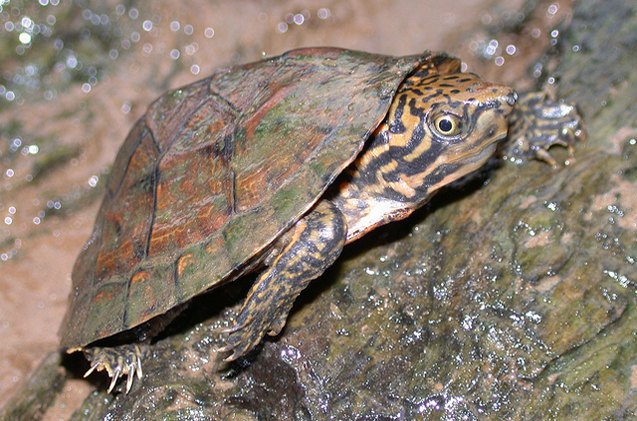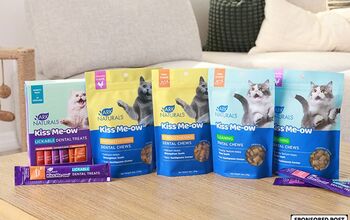Stripe-Necked Musk Turtle


About Stripe-Necked Musk Turtle
There are five different species of Musk Turtles, and they are the Stripe-Necked Musk Turtle, Razorback Musk Turtle, Loggerhead Musk Turtle, Flattened Musk Turtle, and Common Musk Turtle. There are actually two subspecies of Loggerhead Musk Turtle, and one of them is the Stripe-Necked Musk Turtle.
This breed is rare in the pet trade. However, like all turtles, the Stripe-Necked Musk Turtle should be purchased from a reputable breeder who can guarantee that the animal was born and raised in captivity. Not only will these animals be healthier and more comfortable around people, but you will also be doing your part to keep wild turtles in their natural habitats where they belong.
Beware that Musk Turtles will release a foul smelling liquid when they are highly stressed or frightened. Therefore, care needs to be taken whenever you handle a Stripe-Necked Musk Turtle.
Stripe-Necked Musk Turtles will release a foul smelling liquid when they are highly stressed or frightened.
The Stripe-Necked Musk Turtle can be found in a range that stretches from eastern Tennessee and southwest Virginia all the way to the Pearl River of Mississippi and the Gulf of Mexico. They prefer living in fast flowing streams and rivers that have cobble and rock bottoms within the Cumberland Plateau region. Sometimes they will be found living in shallow, clear creeks along the edges of mountains.
The Stripe-Necked Musk Turtle is similar in appearance to other Musk Turtles, especially since its carapace is keeled and features overlapping vertebral scutes. There are barbels on the chin, and males will have a bigger head and a longer tail than females.
There will be a central keel that is well-defined, along with two keels on the side of the carapace, and these will be more apparent in juveniles than in adults. Also, the plastron of these turtles will be small, so it will not totally protect the animal. There is also be one gular scute and one anterior hinge.
Stripe-Necked Musk Turtles will be anywhere from olive brown to brown in carapace color.
Stripe-Necked Musk Turtles will be anywhere from olive brown to brown in carapace color. The carapace may also feature small black spots. The head of these turtles will showcase black spots on the top, and the throat will have distinctive brown, black, and yellow alternating stripes.
These active aquatic turtles will need a large tank of at least 30 gallons with plenty of water for swimming. Water depth can be maintained at 12” so that your turtle will have loads of space to move around freely.
These turtles will spend the majority of their time underwater, so they will not bask often. Nevertheless, you do need to provide your pet with a suitable basking spot. This can be a rock that projects from the water. This basking area should have a UV light above it, along with a heat lamp that will ensure it reaches anywhere from the mid 80s to low 90s Fahrenheit.
Use a high quality filtration system to keep the water as clean as possible at all times, especially since these turtles are messy eaters. You can keep the bottom of the tank bare or you can use river pebble as the substrate.
A water heater will ensure that the temperature remains consistent at all times, preferably anywhere from the mid to high 70s Fahrenheit. You should also use a heat lamp above the tank to maintain the air temperature at 75-83°F.
Stripe-Necked Musk Turtles should only be handled when it is necessary to do so.
Stripe-Necked Musk Turtles will be primarily carnivorous, so even though they will consume some plants, their diet will mostly consist of crayfish, snails, mollusks, and aquatic insects. You can mimic their wild diet in captivity, but it is also a good idea to provide your pet with a commercial pelleted diet for turtles, as that will ensure that all of his nutrient requirements will be met. Other foods that you can give your turtle include feeder fish and worms.
Stripe-Necked Musk Turtles should only be handled when it is necessary to do so. This will prevent your pet from releasing its foul smelling liquid when stressed, and it will also protect your from painful bites. The more your turtle grows accustomed to you and his enclosure, however, the more comfortable and at ease he will become.
If you would like to set up a community tank, make sure the enclosure is large enough to accommodate all of the turtles comfortably. Stripe-Necked Musk Turtles will do well with other Musk Turtles, as well as Sliders, Cooters, and Painted Turtles. Just watch out for aggressive behavior between rival males, and make sure females are not harassed by males, especially when you are housing multiple Musk Turtles together.
Photo credit: Grover Brown/Flickr; J.D. Willson/Flickr

Lisa Selvaggio is a freelance writer and editor, and our resident cats-pert, with certifications in pet nutrition and pet first aid. She enjoys producing content that helps people understand animals better so they can give their pets a safe and happy home.
More by Lisa Selvaggio

























